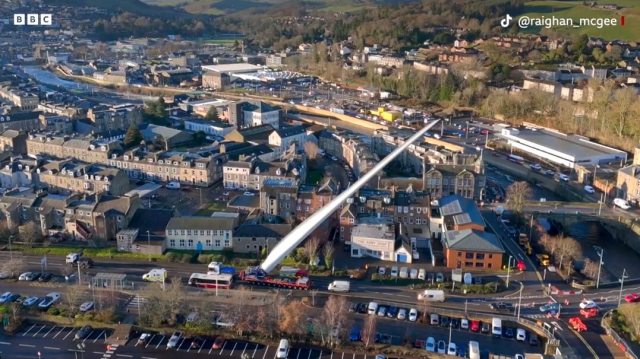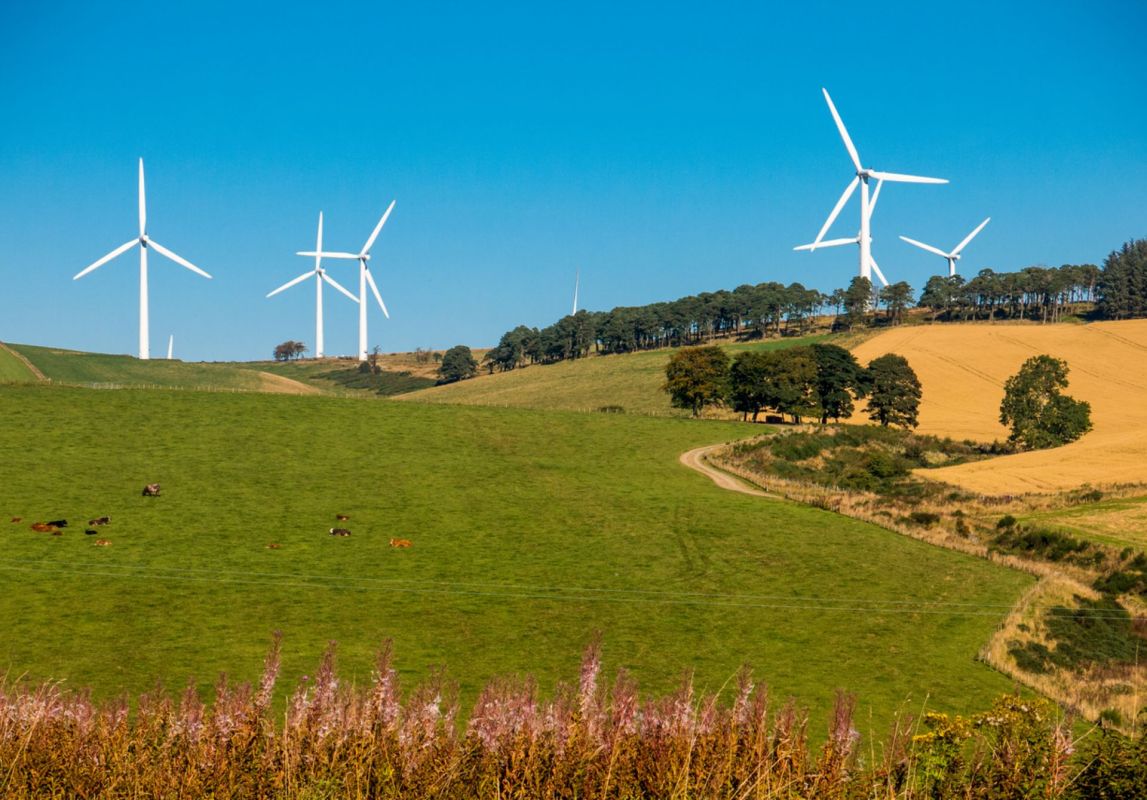Wind turbines are incredibly impressive structures, from development to manufacturing and then production of sustainable power by harnessing the wind's energy.
The effort it takes to transport them to the sites where they will begin generating this clean electricity is incredible, too.
Video footage of one turbine part being taken to a wind farm in the Scottish Borders has gone viral, with a huge 65-meter (over 213-foot) blade needing to be transported almost vertically to avoid buildings, lamp posts, and trees.

The blade was carried on a long flatbed pulled behind a semi truck. It was a slow process, and it's clear dragging the crucial piece of the turbine was doing no favors for local motorists, who were stuck behind the enormous paddle for some time.
Indeed, according to the BBC, residents in the town of Hawick have complained about the traffic the turbine blade moves have caused, and locals might have to deal with a few more crossings yet.
Residents might be looking at the installation of an offshore site in China with some envy, as it took only 30 hours to erect a turbine and have it begin producing power.
Even so, when the development in the Scottish Borders is complete, it is sure to bring significant benefits.
According to renewable power company EnergieKontor, the 11-turbine Pines Burn site is expected to deliver up to 117 gigawatt-hours of energy a year, enough to power 30,083 homes.
Furthermore, the project is anticipated to save as much as 50,310 tonnes (over 55,000 tons) of carbon dioxide pollution annually.
If EnergieKontor receives permission to increase the size of some of the turbines at the site, it could power 34,712 homes and save 58,050 tonnes (nearly 64,000 tons) of carbon dioxide every 12 months.
The Scottish government has set a target of generating 50% of the country's energy needs from renewable sources by 2030, with hopes for total decarbonization of the energy sector to be achieved by 2050.
Join our free newsletter for weekly updates on the coolest innovations improving our lives and saving our planet.









